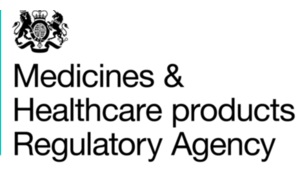9. What should the documented oversight and monitoring strategy contain?
It is the responsibility of the sponsora to define the processes and procedures to ensure the principles and conditions of GCP are adhered to and the sponsor should therefore be responsible for deciding the risk-based oversight and monitoring strategy for the trial and thus provide or approve the content of any formal procedures (policies, plans, protocol, SOPs etc.) that implement the strategy. It is recommended that where the sponsor is undertaking many trials, there is a procedure in place for the development of the documentation that implements the strategy which would include the necessary content, perhaps in the form of template documents. Items for consideration for inclusion in documentation could include the following examples (not intended as an exhaustive list):
- Within documentation there ought to be a clear link to the risk assessment to identify the areas that matter to the results reliability, subject safety and rights and compliance with the legislation
- How sponsor oversight of (Chief) Investigator (Non-commercial), vendors etc will be undertaken
- Type of monitoring to be utilised (central and/or on-site)
- The standards and any SOPs to be followed and any document templates to be used
- Cross-references to other relevant documents within the suite of documentation implementing the oversight and monitoring strategy (e.g. medical monitoring plan, safety plan, data management plan, committee charters etc.)
- Site assessment and initiation procedures
- Training of site staff plus training of sponsor and CRO personnel involved in monitoring, audit, data management etc.
- Frequency of monitoring activities, e.g. site visits, database interrogation reports
- Communication activities with vendors and site(s)
- Monitor site capacity (i.e. maximum number of sites per monitor in relation to resource/skills)
- Where site visits take place, which departments will be visited (i.e. in addition to the investigator, any ancillary departments, such as pharmacy, laboratories, imaging etc.)
- What data will be reviewed at site (% of SDV needed and on what data)
- Data validation specifications
- Data collection and transfer methods
- Computer systems validation/study build validation – e.g. for data transfers, eCRF, IVRS use
- Procedures for use and monitoring of central laboratories, specialist services (imaging, ECGs etc.)
- Considerations for unblinded monitors and reviewers (if necessary)
- Expectations for availability of the principal investigator (PI) during monitoring visits
- How non-compliance will be recorded and resolved
- Oversight of the investigator and ancillary department site files
- Escalation process:
- For central monitoring, what triggers will be utilised for escalating to on-site monitoring visits, or triggers from site visits for audit etc.
- For both central and on-site monitoring, how unresolved issues or serious non-compliances are handled that the monitor cannot address
- Supplies management and monitoring processes (IMP and ancillary materials, subcontractors, QP certification etc.)
- SAE reporting processes and associated monitoring responsibilities
- AE and SAE review, signal detection, medical monitoring
- Query Management:
- Data queries from data management activities and found by monitoring at site
- Protocol queries to medical monitor
- IMP (including temperature excursion management)
- Documentation and review of monitoring activities:
- Types of reports (monitoring visit report, central monitoring metrics, statistical monitoring etc.)
- Format of the reports
- Responsibility for reviewing the reports
- Timelines for preparing and reviewing reports
- Role and procedures of adjudication, data monitoring, management and steering committees
- Processes for interim analysis (data gathering, analysis and reporting control)
- Sponsor Trial Master File management
- Regulatory and REC approval maintenance (process for amendments, urgent safety measures, serious breach evaluation and reporting)
- Contract and insurance review and maintenance
- Audit plans
- Checks on randomisation processes
a. SI 2004/1031 (as amended) Regulation 28 (1) and (2).
Version 1: 22 February 2013






